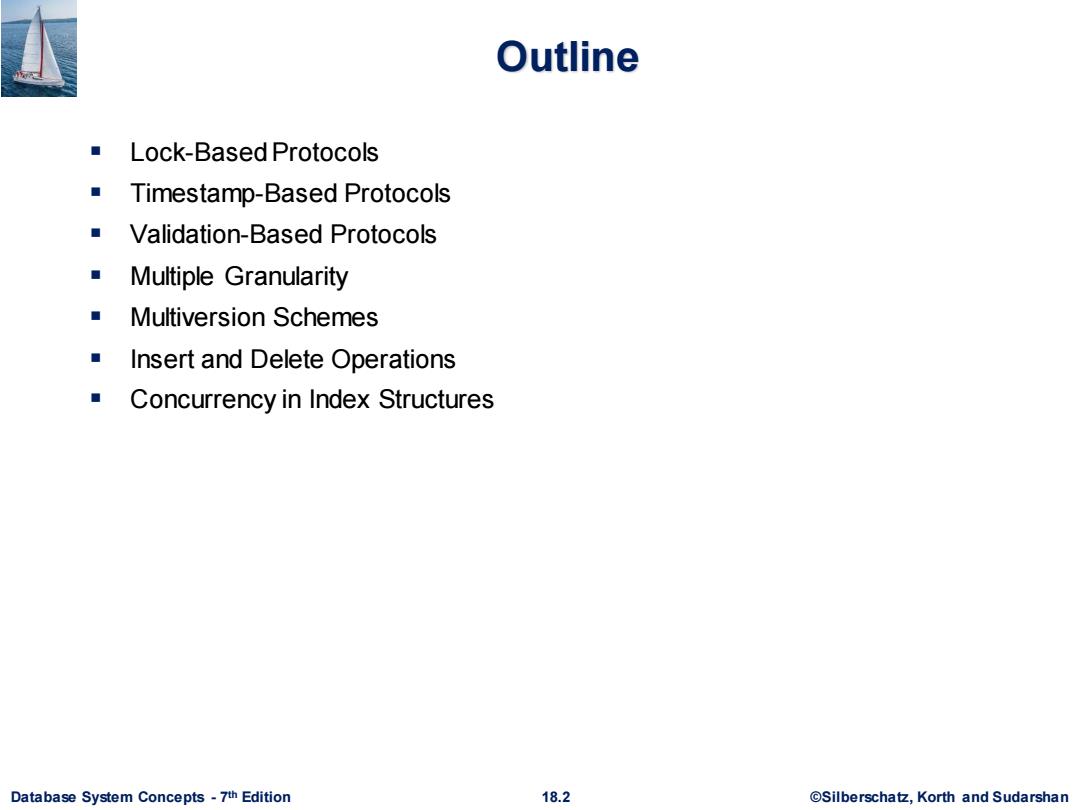
Outline Lock-Based Protocols Timestamp-Based Protocols Validation-Based Protocols ■ Multiple Granularity Multiversion Schemes Insert and Delete Operations ■ Concurrency in Index Structures Database System Concepts-7th Edition 18.2 ©Silberscha乜,Korth and Sudarshan
Database System Concepts - 7 18.2 ©Silberschatz, Korth and Sudarshan th Edition Outline ▪ Lock-Based Protocols ▪ Timestamp-Based Protocols ▪ Validation-Based Protocols ▪ Multiple Granularity ▪ Multiversion Schemes ▪ Insert and Delete Operations ▪ Concurrency in Index Structures
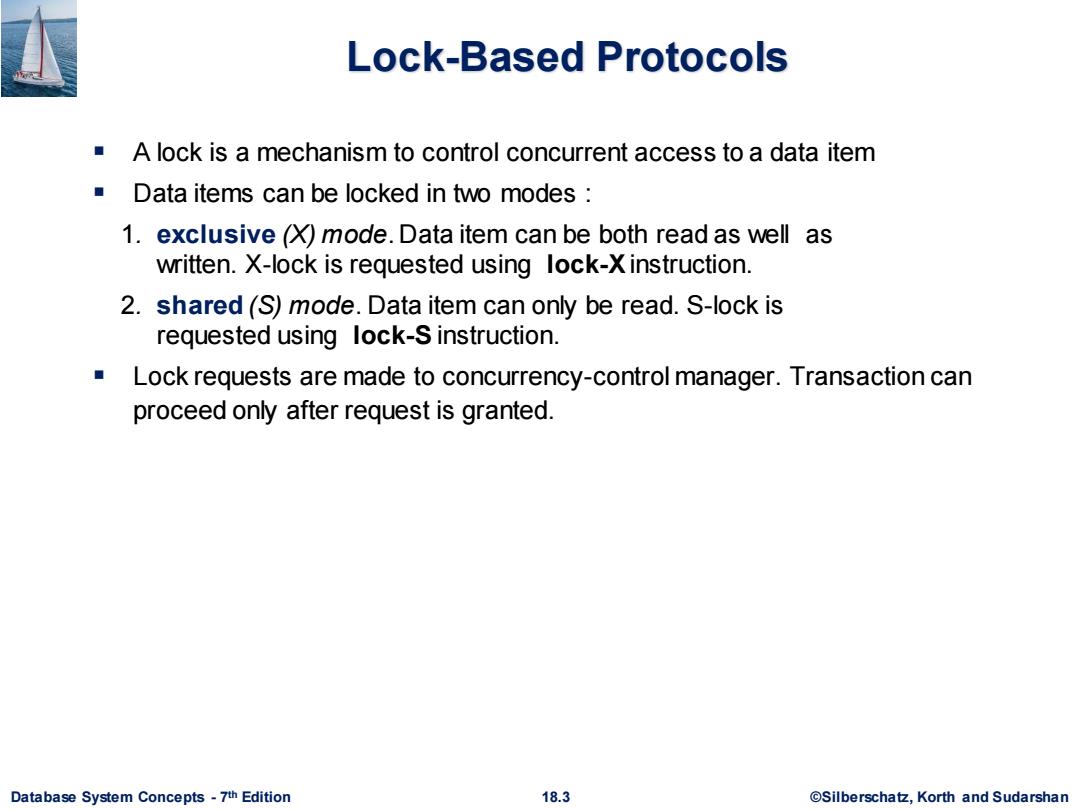
Lock-Based Protocols A lock is a mechanism to control concurrent access to a data item Data items can be locked in two modes 1.exclusive (mode.Data item can be both read as well as written.X-lock is requested using lock-X instruction. 2.shared (S)mode.Data item can only be read.S-lock is requested using lock-S instruction. Lock requests are made to concurrency-control manager.Transaction can proceed only after request is granted. Database System Concepts-7th Edition 18.3 ©Silberscha乜,Korth and Sudarshan
Database System Concepts - 7 18.3 ©Silberschatz, Korth and Sudarshan th Edition Lock-Based Protocols ▪ A lock is a mechanism to control concurrent access to a data item ▪ Data items can be locked in two modes : 1. exclusive (X) mode. Data item can be both read as well as written. X-lock is requested using lock-Xinstruction. 2. shared (S) mode. Data item can only be read. S-lock is requested using lock-S instruction. ▪ Lock requests are made to concurrency-control manager. Transaction can proceed only after request is granted
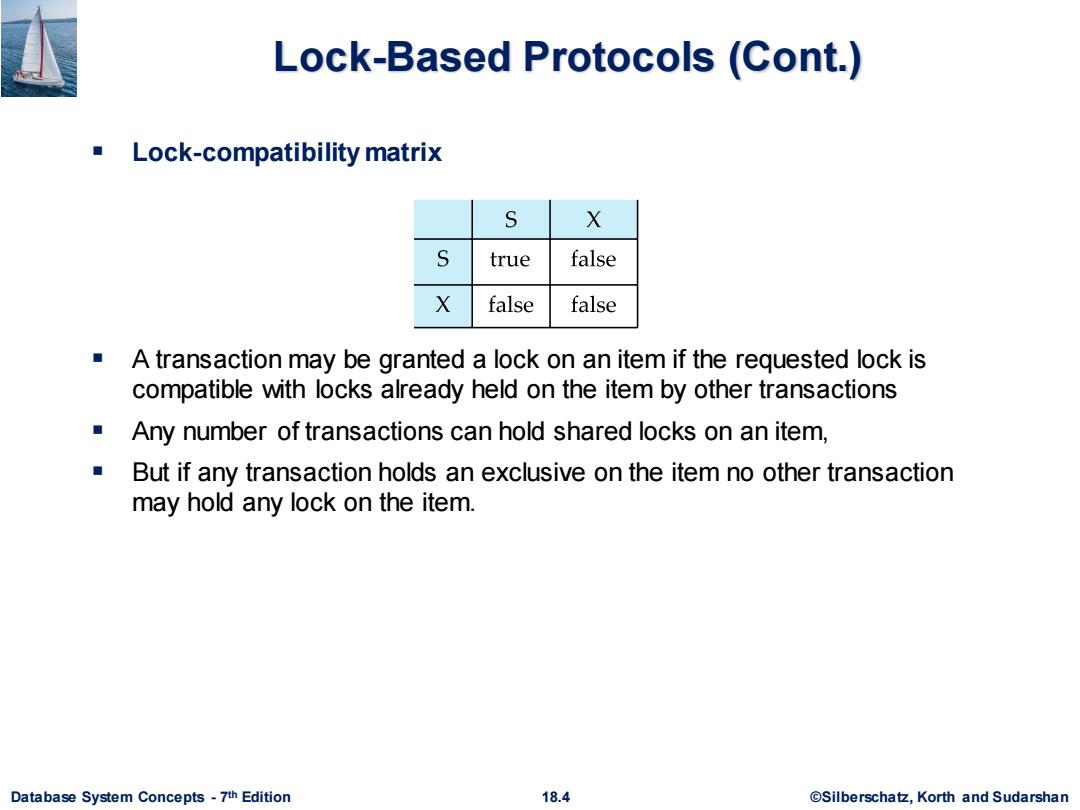
Lock-Based Protocols (Cont.) Lock-compatibility matrix S X S true false X false false A transaction may be granted a lock on an item if the requested lock is compatible with locks already held on the item by other transactions Any number of transactions can hold shared locks on an item, But if any transaction holds an exclusive on the item no other transaction may hold any lock on the item. Database System Concepts-7th Edition 18.4 @Silberschatz,Korth and Sudarshan
Database System Concepts - 7 18.4 ©Silberschatz, Korth and Sudarshan th Edition Lock-Based Protocols (Cont.) ▪ Lock-compatibility matrix ▪ A transaction may be granted a lock on an item if the requested lock is compatible with locks already held on the item by other transactions ▪ Any number of transactions can hold shared locks on an item, ▪ But if any transaction holds an exclusive on the item no other transaction may hold any lock on the item
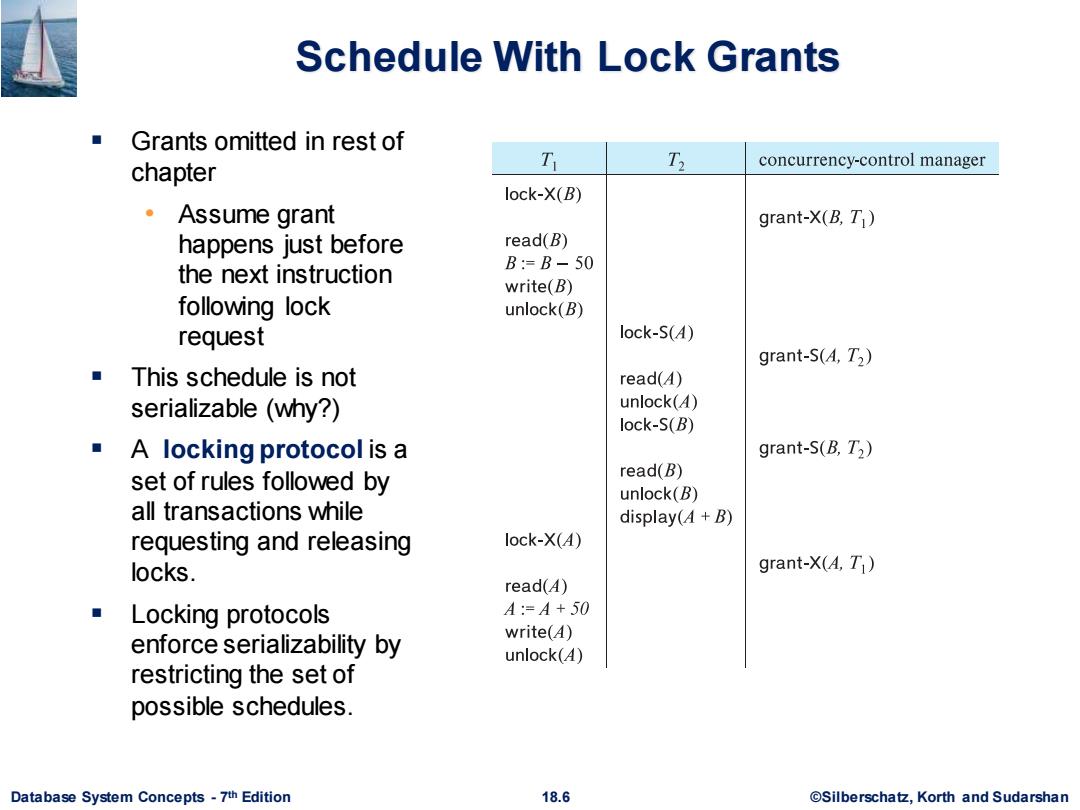
Schedule With Lock Grants Grants omitted in rest of T T concurrency-control manager chapter lock-X(B) ·Assume grant grant-X(B,T) happens just before read(B) the next instruction B:=B-50 write(B) following lock unlock(B) request lock-S(A) grant-S(A4,T2) ■This schedule is not read() serializable (why?) unlock(4) lock-S(B) A locking protocol is a grant-S(B,T2) set of rules followed by read(B) unlock(B) all transactions while display(4+B) requesting and releasing lock-X(4) locks. grant-X(A,T) read(4) ■Locking protocols A:=A+50 enforce serializability by write() unlock() restricting the set of possible schedules. Database System Concepts-7th Edition 18.6 @Silberschatz,Korth and Sudarshan
Database System Concepts - 7 18.6 ©Silberschatz, Korth and Sudarshan th Edition Schedule With Lock Grants ▪ Grants omitted in rest of chapter • Assume grant happens just before the next instruction following lock request ▪ This schedule is not serializable (why?) ▪ A locking protocol is a set of rules followed by all transactions while requesting and releasing locks. ▪ Locking protocols enforce serializability by restricting the set of possible schedules
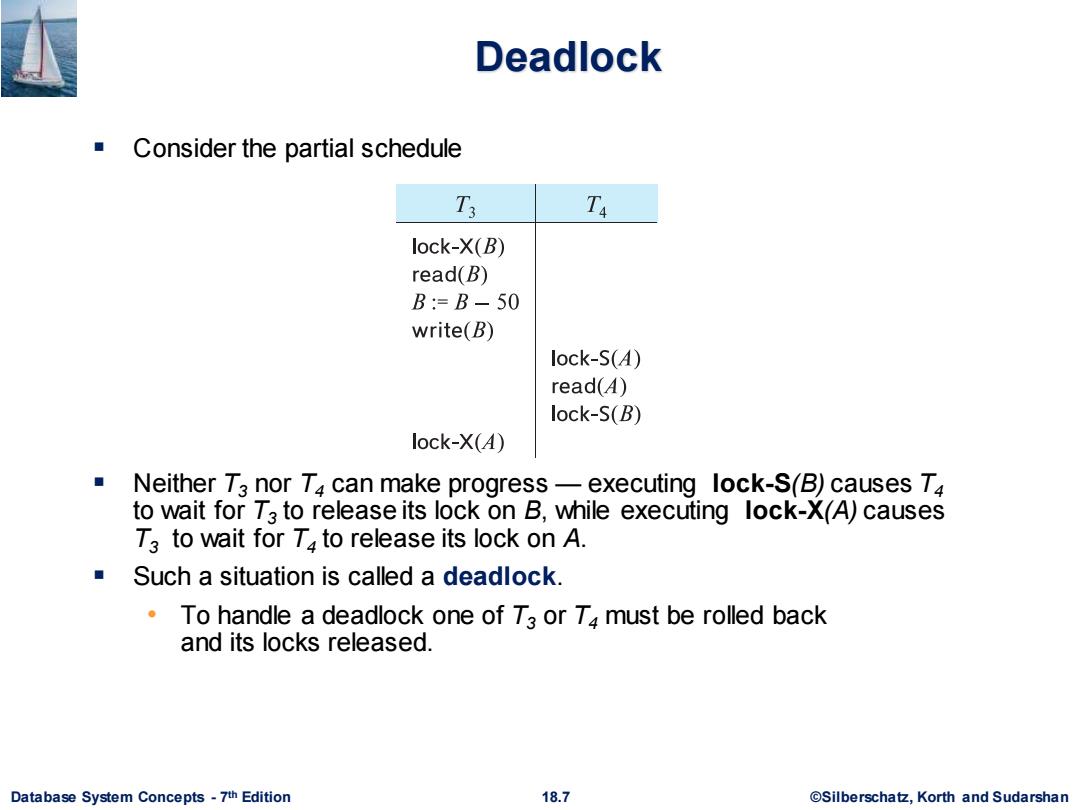
Deadlock Consider the partial schedule T3 Ta lock-X(B) read(B) B:=B-50 write(B) lock-S(A) read() lock-S(B) lock-X(4) ■ Neither T3 nor T4 can make progress-executing lock-S(B)causes T4 to wait for T3 to release its lock on B,while executing lock-X(A)causes T3 to wait for Ta to release its lock on A. Such a situation is called a deadlock. To handle a deadlock one of T3 or T4 must be rolled back and its locks released. Database System Concepts-7th Edition 18.7 ©Silberscha乜,Korth and Sudarshan
Database System Concepts - 7 18.7 ©Silberschatz, Korth and Sudarshan th Edition Deadlock ▪ Consider the partial schedule ▪ Neither T3 nor T4 can make progress — executing lock-S(B) causes T4 to wait for T3 to release its lock on B, while executing lock-X(A) causes T3 to wait for T4 to release its lock on A. ▪ Such a situation is called a deadlock. • To handle a deadlock one of T3 or T4 must be rolled back and its locks released